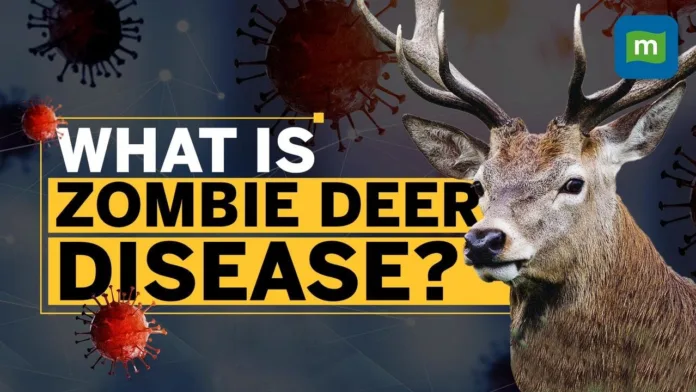Chronic wasting disease (CWD) spreading among deer raises concerns of future human transmission, urgent calls for global preparedness
Scientists are sounding the alarm over the surge of Chronic Wasting Disease (CWD), commonly known as ‘zombie deer disease,’ among deer populations in the United States. While the disease primarily affects deer, elk, and moose, experts warn of the potential for human transmission, urging global governments to prepare for a possible ‘slow-moving disaster.’
CWD is characterized by symptoms such as drooling, lethargy, stumbling, and a vacant stare in infected animals. More than 800 samples of deer, elk, and moose in the state of Wyoming have tested positive for the disease, prompting concerns among wildlife experts.
Wildlife disease ecologist Krysten Schuler explained, “They get this abnormal protein, and it causes them, over a year or two, to develop these holes in their brain so they can’t feed themselves. Eventually, they’ll die.”
Scientists caution that CWD could become a potential zoonotic threat, emphasizing the need for global readiness. CWD researcher Dr. Cory Anderson drew parallels with the mad cow disease outbreak, urging governments to prepare for potential spillover events. Dr. Raina Plowright, a disease ecologist at Cornell University, highlighted the broader context of emerging zoonotic pathogens moving between species, necessitating vigilance.
The risk of potential human outbreaks is heightened as human settlements and agricultural operations encroach further into environments inhabited by animals carrying the disease. With the hunting season underway in the US, the Centers for Disease Control recommends testing game animals for CWD, and advises against consuming meat from cervids that appear ill.
Dr. Thomas Roffe emphasized the importance of adhering to established scientific practices to slow the spread of CWD, cautioning against feeding wildlife amid a disease pandemic. The potential consequences for ecosystems and public health are significant, underscoring the need for proactive measures.
Studies have indicated that wildlife predators such as wolves, cougars, and bears can detect sick animals early, preying on them and effectively removing disease carriers from the landscape. Unlike humans, these predators have shown immunity to CWD.
As scientists grapple with the evolving situation, the urgency to address CWD is palpable, emphasizing the importance of safeguarding wildlife and human health.

Comments are closed.